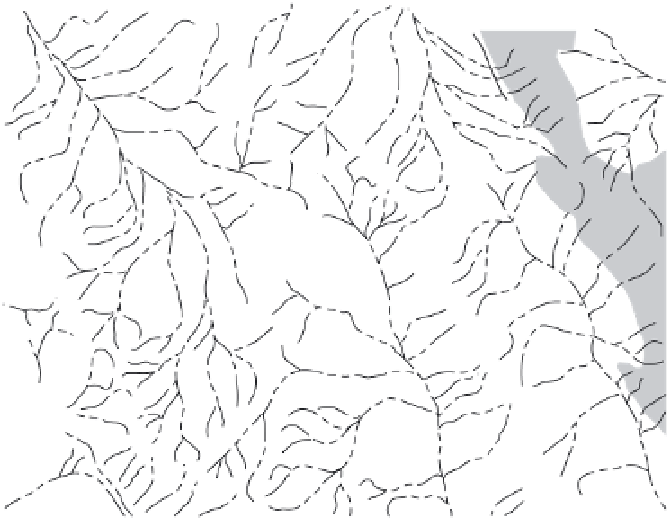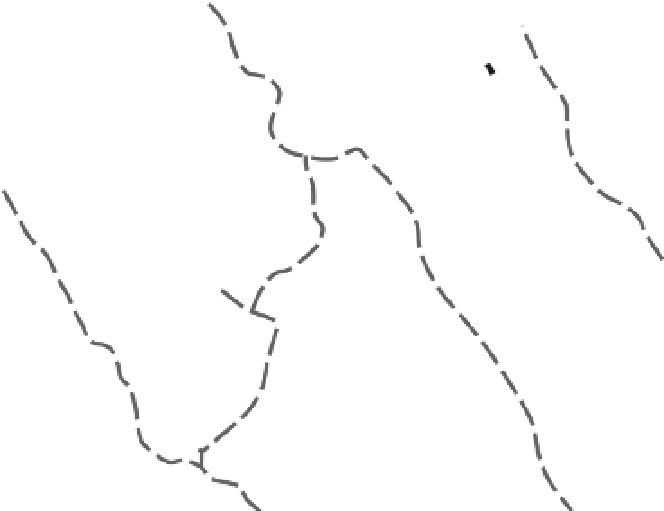Geology Reference
In-Depth Information
30 km
Drainage
Asymmetry
in Idaho Ranges
z
A
w
Fig. 10.10
Extensional mountain
ranges in the Basin and Range,
Idaho.
Asymmetry of transverse basins with
short basin half-widths associated
with active extensional faults. Axial
drainages flowing to the northwest
or southeast are separated by
basement ridges at A, B, and C.
Oblique drainages that develop near
fault terminations, step-overs, or
segment boundaries occur at W, X, Y,
and Z. Modified after Leeder and
Jackson (1993).
x
B
C
y
N
bedrock
uplift
normal
fault
drainage
divide
basin
half-width
wall uplifts of each fault can sometimes indicate
which is the more active fault (Leeder and Jackson,
1993). Similarly, if an axial river flows through the
basin, it will tend to be displaced from the center
of the basin toward the more active fault, where
subsidence is generally the greatest.
Fault terminations and offsets or step-overs
along range fronts, where displacement is trans-
ferred from one major fault strand to another,
often have distinctive relationships with drain-
age basins. If we accept that most faults lengthen
as they accumulate more displacement (Cowie
and Scholz, 1992), it would be expected that riv-
ers would tend to be displaced away from the
zone of maximum uplift and toward or around
the growing tip. As fault tips propagate toward
or past each other, deflected rivers will tend to
be localized into the space between the tips,
which may eventually be considered a “transfer”
zone. The reason these catchments become
large is that, as the fault propagates, the trapped
catchment incrementally expands toward and
beyond the fault tip. Commonly, rather large
drainage basins that are oriented obliquely,
rather than orthogonally, to the range front
develop near fault terminations or transfer
zones (Figs 10.10 and 10.11).
As faults grow and their tips overlap, one fault
may predominate over the other and accommo-
date some of the displacement that was previ-
ously taken up on the other fault (Fig. 10.12).
Evidence that a propagating fault is accumulating
displacement at the expense of another fault (Fig.
10.12) may be derived from a combination of the
following: (i) The diminution of topographic
relief along the footwall of the propagating
fault - despite active faulting along the propagat-
ing fault, the amount of footwall uplift and topo-
graphic relief is minimal along these young
faults. (ii) Changes in the size of alluvial fans and
their proximity to the range front - as faulting
steps forward into the hanging wall, the proximal
part of the former hanging wall becomes part of
the footwall of the new fault. Footwall uplift
drives incision (fanhead entrenchment) of the
old fans and displaces their apices away from the
topographic range front. The abandoned fan
surface may be tilted steeper than depositional
gradients as the former hanging wall becomes
a newly activated footwall. (iii) Changes in drain-
age basin size and orientation in the newly
formed footwall - large, oblique catchments that
marked the termination of the older fault may be
incorporated into the footwall of the new fault,


































































































































